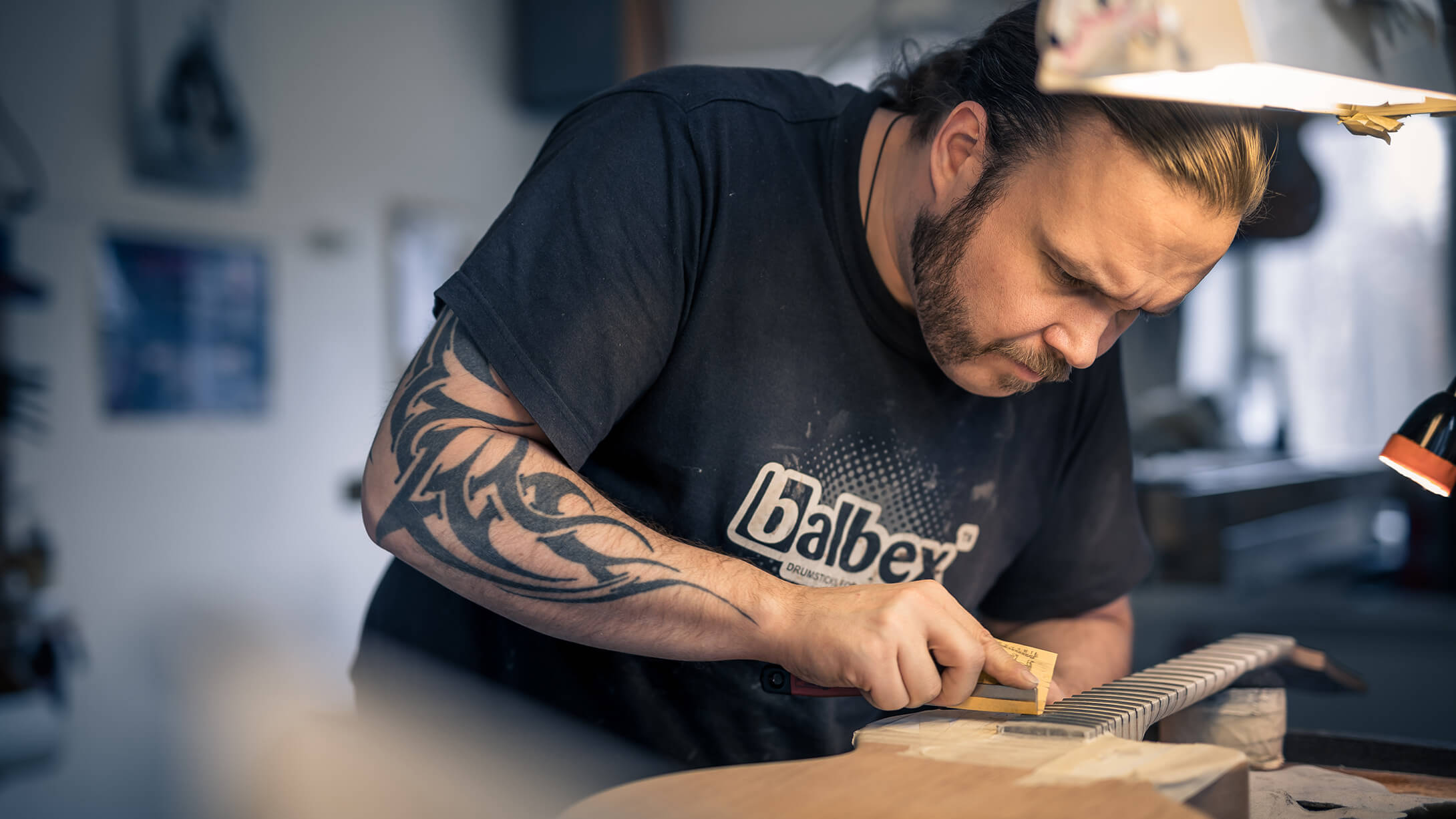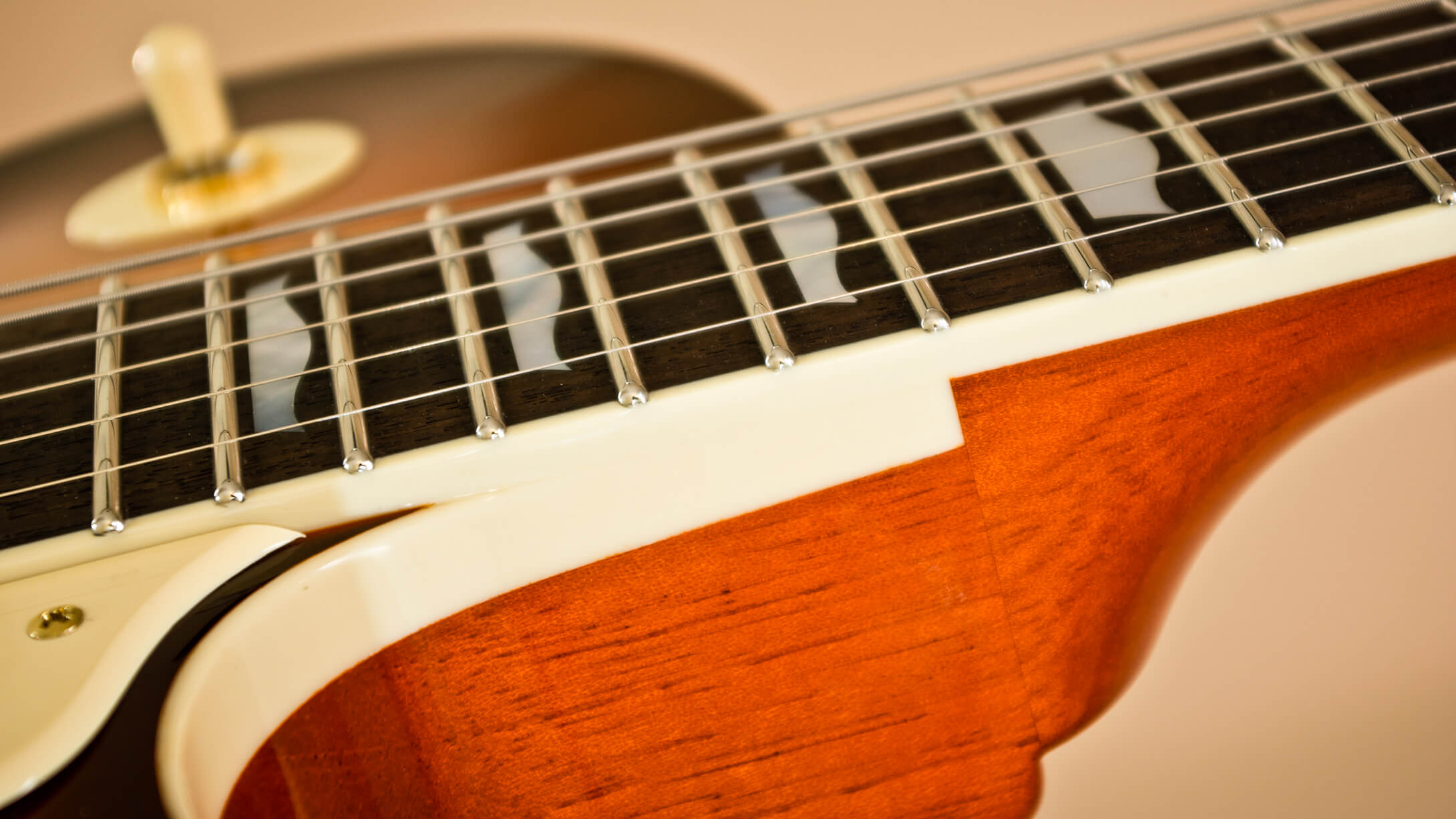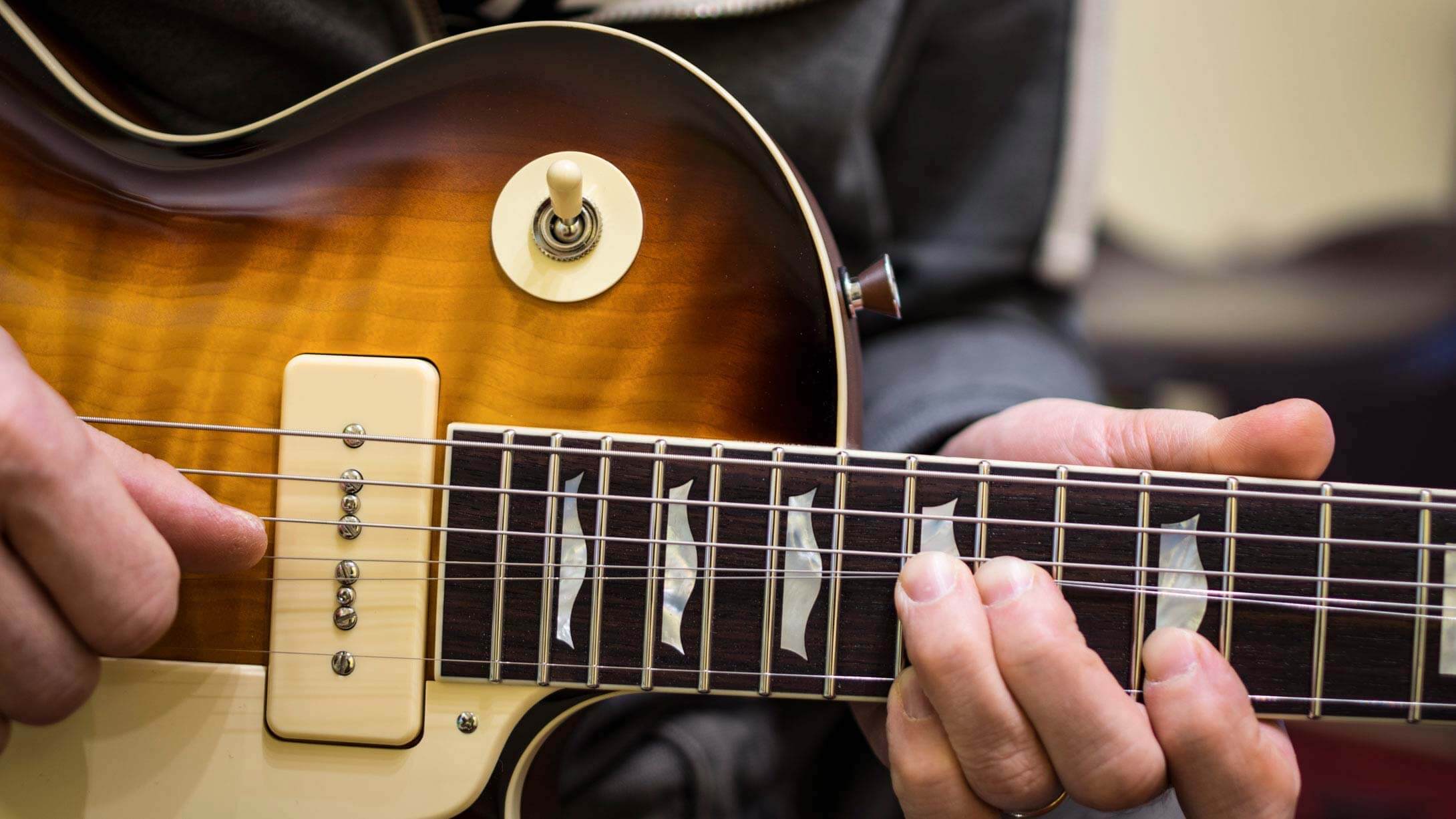
THE HOLY GRAIL OF FRET ENDS
Fretwork – a crucial element in making guitars
We use a lot of time to the fretwork – perhaps more than any sensible person would do. It takes hours just to shape, sand and buff the dome fret ends the way we do! And that’s just the fret ends…
Then again, the fretwork is such a very crucial, essential element in a guitar. The frets need to be just right, no matter what. So… to hell with being sensible, I say.
A world of difference in playability
We’ve decided not to count the hours or the minutes, but instead just keep on doing the very best we can. Skilful fretwork simply makes a world of difference on how the guitar feels to play.
Expert levelling of the frets is the key to enable low and buzz free action – and mirror buffed frets make bending notes smooth as butter.

DOES FRET SIZE AFFECT TONE?
A fret size for every taste
Some players prefer lower frets so they can feel the fretboard under the fingertips. Others enjoy the effortless bending of notes with higher frets.
Small Frets
Our small frets provide the familiar feel of vintage S and T style bolt-on guitars. Not perhaps the most popular size in modern guitars, but for some players this is the one and only way to go. We install the small frets sometimes to the Mojo and VSOP custom guitars, and they are a relatively common choice in the Steam custom basses.
Medium Frets
These frets are very common in modern electric guitars. They’re comfortable all-around frets that don’t feel super low but not extra high either. In our instruments, the medium frets are the most popular choice in the Mojo guitars and Steam basses
Narrow/High Frets
The narrow/high frets are generally more common in T and S style guitars. They provide the vintage narrow look, yet the height makes the playability similar to jumbo size frets. Among our guitars, the Mojo and VSOP custom orders are quite often made with these frets.
Jumbo Frets
The jumbo frets are very common in modern electric guitars. Big frets equal fast, comfortable feel and precision when bending notes. The overall playability is smooth and effortless. Jumbo frets are a popular choice in the Mojo, VSOP, Unicorn, Duke, Aeon and Hellcat – oh well – in all the guitar models!
Low Jumbo Frets
This is a “hybrid” fret size with the width of our jumbo frets and the height of our medium frets. They’re not quite as low as what is sometimes referred as the vintage “fretless wonder” type frets, but the feel is similar – wide, but low enough so you can feel the fretboard better under your fingertips. This is a newer addition to our choice of frets. So far it has become a quite popular choice for the Unicorn custom guitars.
How about the sound, then?
Different fret sizes mainly affect the playability, but it is justified to say that the fret size can also affect the sound. Theoretically speaking, the different mass of various sized frets reflects to the tone of a guitar, but I would say this is rather irrelevant. Different size frets make you however play with a different touch – and that does have a significant effect to the tone, for sure.
Challenge yourself!
At the end of the day, there is really no right or wrong here. The fret size is purely a matter of your taste.
Sometimes, it might be a good idea to challenge yourself, though. If you’ve played with low frets all your life, this has shaped the muscle memory of your fretting hand in a certain way. So… when you pick up a guitar with high frets, it feels awkward, and your reaction may be: “No, I don’t like this. Not for me”.
But – consider this: A few more hours of playing that guitar, after you have started to get used to the feel of the high frets… What if you would find a new, fresh perspective to your playing? What if you would realize that the higher frets allow you to do things you couldn’t before? You never know without giving new experiences a fair chance!

LET’S BUST A FEW FRET RELATED MYTHS!
Worn down frets – bad intonation?
When accurately installed and crowned, both narrow and wide frets are equally well in tune. So in this regard, the fret width does not affect to tuning. However, if frets are poorly crowned or worn down, this has a negative effect to the intonation of the guitar – and with wider frets the effect can be bigger.
Jumbo frets not in tune?
The height of the frets does not theoretically affect to playing in tune either – but your playing technique certainly does. If you press the strings with excessive force against the frets, the guitar does appear to be out of tune – and with higher frets the effect is more dramatic.
Stainless steel – an expensive scam?
Stainless steel is a modern day fret material, and an alternative to the traditional nickel silver. Stainless steel has slowly become the favourite of many guitar maker masters around the world due to the superb durability and smooth playability it offers.
When expertly installed, stainless steel frets will indeed last for a lifetime. This is a fact, not a myth. Stainless steel has become over the years the most popular choice in my guitars, too. It is these days so popular, that we don’t offer nickel silver frets anymore on the Guitar Creator as an option.
Nickel silver – due date expired?
Nickel silver is a metal alloy consisting of copper with nickel and often zinc. The name refers to the silvery appearance, but the material does not contain elemental silver. Frets made of high quality 18% nickel silver lasts for years in active use. Eventually nickel silver frets will however wear down and need to be redressed – and finally at some point the guitar will need a full refret. Even if we don’t offer nickel silver on the Guitar Creator, we can certainly use this material in a custom ordered guitar.
All our common fret sizes are available in both stainless steel and nickel silver materials.

STAINLESS STEEL FRETS – A/B BLIND TESTING
Top notch playability
Some say stainless steel frets make a guitar sound brighter, and the playability suffers too. We’ve done a lot of A/B blind testing on this, and my conclusion is, that when stainless steel frets are expertly installed, dressed and buffed, the possible tonal difference is insignificant, and the playability is absolutely top notch – smoother than one can achieve with traditional fret material. Period.
Sloppy work, sloppy result
Nevertheless, there are persistent rumours circulating, saying “stainless steel frets are no good”. Let’s address this. In my experience, the possible problems with stainless steel frets can be usually tracked down to poor fretwork – bad installation, dressing and/or buffing.
Stainless steel is a very hard material, and requires extra attention to detail – sloppy work gives sloppy result. So… if you take your guitar to be re-fretted with stainless steel, be absolutely sure to have the fretwork done by an experienced professional with good references. And notice – ‘experienced’ refers in this case spesifically into experience in stainless steel fretwork.
Too hard for tools?
Some of the stainless steel badmouthing seems also to originate from manufacturers who may have chosen not to use stainless steel because it is slower to work with and wears down their tools. And… while this is very true – stainless steel does wear down tools faster cause it’s so hard – it doesn’t have anything to do with tone or playability of a guitar.
All fretwire we use is RoHS compliant.